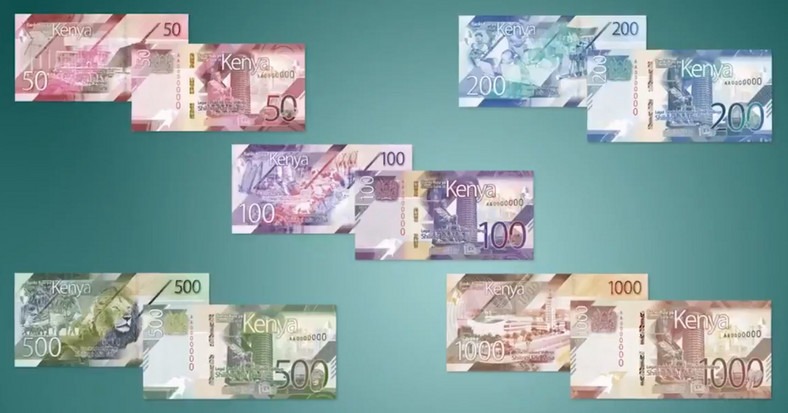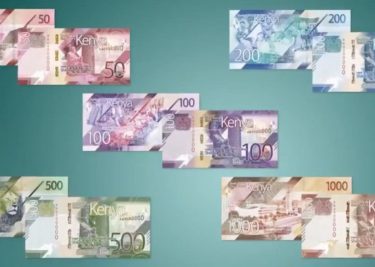The Evolution of Kenya’s Shillings

Kenya's most recent notes
In 2002, Kenya’s third president, Mwai Kibaki, was elected into office. The following year, we marked our 40th independence anniversary, and a new commemorative and circulation coin was introduced by the Central Bank of Kenya. The bi-metallic coin had the same face value as our anniversary celebration – Ksh 40, and became the first and only circulating currency that featured the portrait of President Kibaki. The currency after the regime change remained significantly similar, with the exception of a portrait change from Moi back to the first president Mzee Jomo Kenyatta.
There were mixed reactions from the public, however, regarding the new Ksh 40 coin. In his presidential campaign, prior to his election, Kibaki promised not to alter the currency to include his own portrait. Nonetheless, the Jomo-portrait currency was accepted and became Kenya’s recognizable currency from 2005 onward.
In 2010, a new constitution was adopted. The new law decentralized power relations, promised accountability and fair distribution of resources. With regards to currency, the constitution dictated that future coins and banknotes would depict images that symbolized or that were synonymous with Kenya as opposed to individuals’ or presidential portraits. The idea was brought forth to promote commonality in the time when ethnic clashes and tribalism were increasing in different regions within the country.
In 2012, the Central Bank of Kenya launched a global campaign for a new currency design, calling on artists to submit sketches that would reflect the decision passed in the new constitution while adhering to basic requirements. These included: attractiveness of the design, socially acceptable and cultural relevance.
The end result was a total change.
By mid-July 2019, the circulation of our new currency began. There were posters in some banks and on the green walls of most shops. The posters listed the new currency notes and for people to know what could be identified as legitimate. It goes without saying that we couldn’t help but marvel at the new, crisp notes and shiny coins, all portraying a facet of our nation. Presently, the Ksh 1 coin boasts a giraffe, while the Ksh 5 coin has a rhino’s portrait. The Ksh 10 has a lion and the Ksh 20 has the image of an elephant. As for the notes, the lowest denomination remains the Ksh 50 note that is a shade of pink and symbolizes ‘Green Energy’. The Ksh 100 note is purple and signifies ‘Agriculture’ while the Ksh 200 is blue (like the Ksh 20 note of 1981) and is titled ‘Social Services’. The Ksh 500 is green, highlighting ‘Tourism’ and the Ksh 1000 is a shade of yellow-brown and titled ‘Governance’. The front sides of all these notes include their numeric symbols and wording in Kiswahili, an image of the KICC building with the Mzee Jomo statue, the words ‘Central Bank of Kenya’ and the name and signature of the current CBK Governor.





